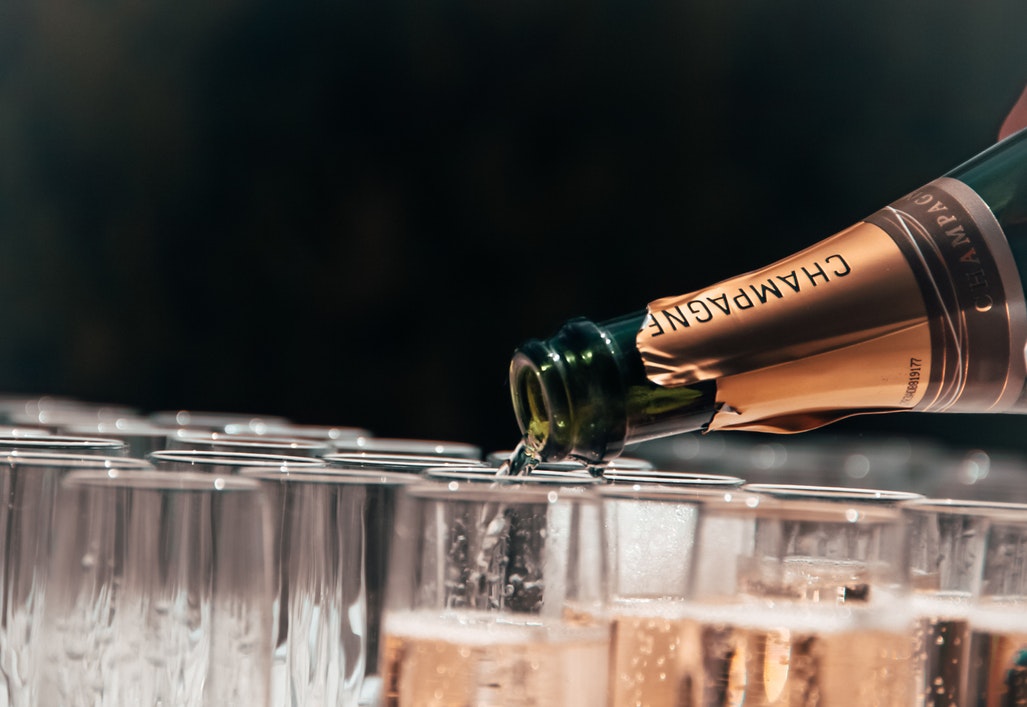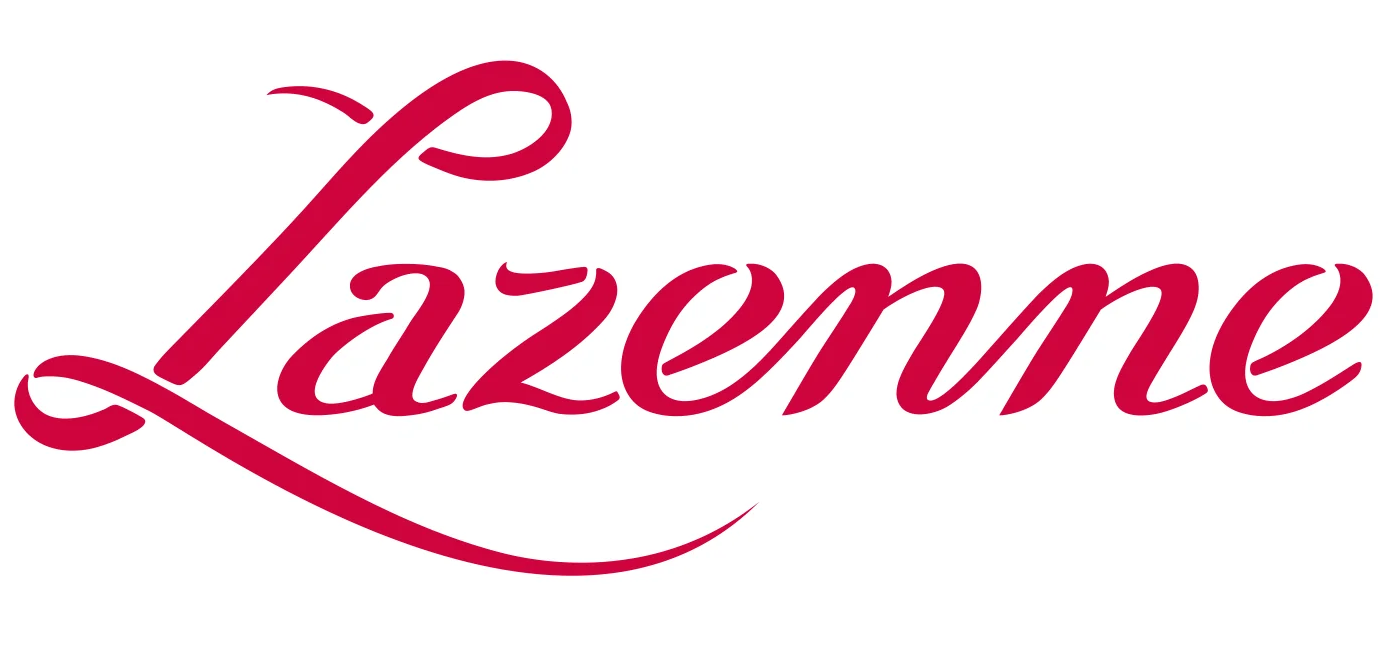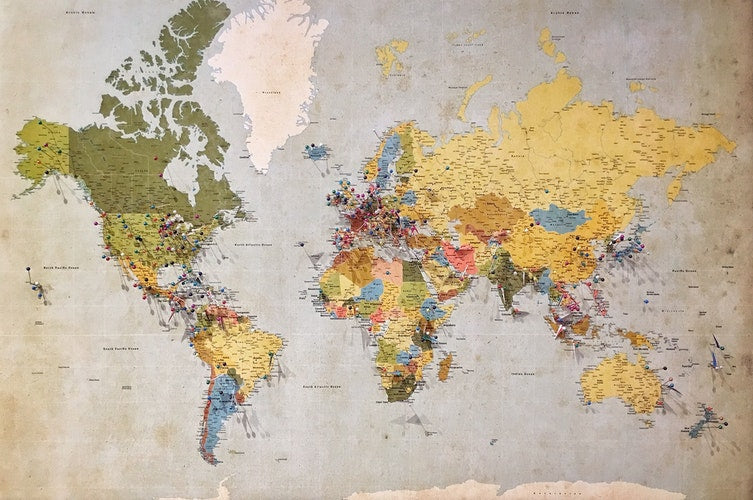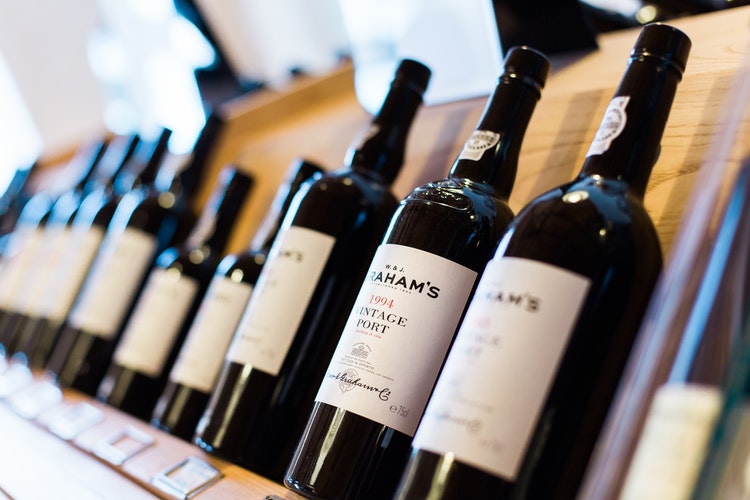
The Ultimate Guide to Champagne 101
Sparkling wine used to be seen as a purely celebratory wine; weddings, birthdays, promotions were all an opportunity to open something delicious and bubbly! However, over the last 10 years, that's completely changed and whilst sparkling wines still remain the drink of choice for special occasions, they're drank with far more regularity, and sales of sparkling wine have soared over the last decade as a result! Not only that, but with the increased thirst for bubbles, the world of sparkling wine suddenly seems much larger than it ever did before. Sparkling wines from South Africa, New Zealand, Australia and America are suddenly available, Prosecco continues to go from strength to strength, high quality Cava is starting to make a name for itself and even the UK is getting in on the act, with a growing, exciting industry in the south! Then of course, there's the King: Champagne, which is watching all of these developments with quiet consternation.
With increased choice comes the increased dilemma; which to pick?! Whilst there's more variation in sparkling wine than there's ever been, if you ask someone in the street to name a famous style of it, chances are they're going to say Champagne. It's the most widely known and perhaps the most replicated wine style in the entire world. So, what makes Champagne so special? Let's have a look.
A Brief History
Champagne is one of France's oldest, grandest wine regions despite its relatively modest size, yet it didn't become known for sparkling wine until the 17th century. Most Champagne was, historically, a zesty, slightly tinged white wine, mostly made from Pinot Noir. So where do the bubbles of Champagne originate from? There's a few theories, but the most likely is that during the cold, winters of the 18th century, fermentations wouldn't finish completely and sugar would be left in the wine before it was bottled. In the warmer Spring that followed, this would then referment, leaving carbon dioxide trapped in the bottle and, voila, a sparkling wine is born! Incidentally, the story of Dom Perignon creating Champagne as we know it today is a bit of a myth, albeit a lovely one!
Then, in the 19th century, it all changed. Improvements in glass strength to withstand the pressure of a traditional bottle fermentation, the creating of riddling racks by Madame Clicquot, the understanding of the amount of sugar needed for a second fermentation and reliable corks brought Champagne into the world with a bang. Indeed, some of the regions most famous producers can trace their origins back to this point.

The Climate and Geography
An often overlooked element of Champagne is its geography. Far to the north of France, this is one of Europe's coolest wine producing regions, which is essential for producing the style of wine made here. Grapes are routinely only on the verge of being ripe, which helps retain the all important acidity, fresh fruit flavours and the structure to age for a long time. Champagne is also perhaps the worlds most enthusiastically protected appellation, and legally speaking, only wine made in the 34,500 hectares that compromises Champagne's vineyards can be called Champagne.
Not only that, but Champagne is home to some of the worlds most calcareous soils, with Chardonnay and Pinot Noir both benefiting from the high limestone content here. The best sites are gently sloping to catch the maximum sunshine, and there is a hierarchy of quality, with Grand Cru Villages and Premier Cru Villages home to the regions most highly regarded vineyard sites. An exciting development in Champagne is the increasing tendency to explore and discover more about the terroir and what influence it has. Keep an eye out for the explanation of Grower Champagne later on, as that's what this is all about!

Production
Modern day productions are a little more complex, as you might imagine. Champagne production is all about the secondary fermentation in bottle, known as the 'Traditional Method' or 'Methode Champenoise'. This lengthy, laborious process can be broken down into 8 separate parts:
Step 1: Selecting the Cuvée: The cuvée is the base wine selected to make the Champagne. Grapes used to make Champagne must come from Champagne itself, and 99% of production is accounted for by Pinot Noir, Pinot Meunier and Chardonnay. The blend chosen will have a big impact on the resulting style, and premium prices are paid for grapes from Grand Cru and Premier Cru vineyards.
Step 2: Assemblage. Producing Champagne is rarely a simple task, and some of the most desirable and expensive Champagne's can be a blend of well over 50 different wines, just to create the base wine! The idea is to produce a 'house style' which is consistent from vintage to vintage, reinforcing the brand dominant trade of Champagne and, importantly, helping to mitigate the hazardous weather in Champagne. Once the final blend is produced, this base wine goes into the bottle ready for the tirage.
Step 3: Second Fermentation. Next sugar, yeast and yeast nutrients are added, and the entire concoction, called the “tirage”, is put in a thick walled glass bottle and sealed with a bottle cap. The tirage is placed in a cool cellar (55-60 F) and allowed to slowly ferment, producing alcohol and carbon dioxide. The Co2 is trapped inside the bottle and forced to integrate with the wine under intense pressure.
Step 4: Aging. As the fermentation proceeds, yeast cells die and after several months, the fermentation is complete. However, the Champagne continues to age in the cool cellar for several more years resulting in a toasty, yeasty characteristic. During this aging period, the yeast cells split open and spill into the solution imparting complex, yeasty flavors to the Champagne. Generally speaking, sparkling wines need to spend a minimum of 18 months in contact with these yeast cells in order to benefit, but most quality Champagne spends significantly longer!
Step 5: Riddling. After the aging process is complete the dead yeast cells are removed through a process known as 'riddling' or 'le remuage' The Champagne bottle is placed upside down in a holder at a 75 degree angle. Each day the riddler comes through the cellar and turns the bottle 1/8th of a turn while keeping it upside down, which forces the dead yeast cells into the neck of the bottle where they are easier to remove. Whilst there are still trained riddlers doing this job, the truth for most producers is that this task has been taken over by machine; gyropalletes that can manage to turn 10,000 bottles to completition within days rather than weeks.
Step 6: Disgorging. Once the wine has spent the amount of time desired aging and riddling is complete, the yeast is removed by a process calling 'disgorgement'. The bottle is kept upside down while the neck is frozen in an ice-salt bath, freezing the yeast into a semi-frozen pellet. The bottle cap is then removed and the pressure from the Co2 shoots the pellet out of the bottle, leaving clean, fresh Champagne behind.
Step 7: Dosage. At this point the “Dosage”, a mixture of white wine, brandy and sugar is added to adjust the sweetness level of the wine and to top up the bottle. Most Champagne has some level of dosage even if it tastes dry, as a way to balance the very high levels of acidity in the wines.
Step 8: Final steps. The bottle is then corked, the wire cage is added to prevent the cork from flying off due to the high pressure and the label is put onto the bottle. The only thing left to do is find the right occasion to open it up!

Styles
Whilst Champagne is always a refreshing, sparkling wine, there are various styles that can vary significantly, many of which are apparent by understanding how to read a Champagne wine label. These are the most important and commonly seen clues as to what sort of wine you're going to be drinking.
If the base wine is made from a specific blend of grapes or intentionally from a single variety, you may see the following information on the labels
Blanc de Noirs means "white of black", essentially a white wine produced entirely from black grapes. Pinot Noir, Pinot Meunier are the only two black grapes permitted within the Champagne AOC and the wines are often stronger, more robust and have an obvious red fruit character, with wild strawberries and raspberries commonly detected.
Blanc de Blancs means "white of whites", and is means a Champagne made exclusively from Chardonnay. Typically these are quite subtle and are often the highest in acidity, making for potentially very long lived wines. Perfect with seafood!
Rosé wines are produced either by leaving the clear juice of black grapes to macerate on its skins for a brief time or, more commonly, by adding a small amount of still Pinot Noir or Pinot Meunier red wine to the sparkling wine.
It's also important to understand the amount of sugar in a sparkling wine, as this affects the style greatly. Whilst the first three in this list are the most commonly seen, do be aware of:
Brut Nature = no added sugar
Extra-Brut = between 3 and 6 g/litre of residual sugar
Brut = less than 12 g/litre of residual sugar
Extra Sec = between 12 & 17 g/litre of residual sugar
Sec = between 17 & 32 g/litre of residual sugar
Demi-Sec = between 32 & 50 g/litre of residual sugar
Doux = more than 50 g/litre of residual sugar

Growers vs Houses
80% of Champagne is made by its largest producers, and they're likely the names you're the most familiar with; Moet Chandon, Veuve Clicquot, Pol Roger and so on. They're the grand estates and often the producers with the greatest histories, yet due to the fragmented nature of Champagne vineyards, they often don't own anywhere near enough land to produce the grapes they need for their production. As a result, most of these grapes are purchased from vignerons or 'growers'.
In the last 2 decades, the role of the Grower has changed completely, mostly because several of the more enterprising decided to stop selling their grapes to the larger houses and instead, make their own wine. Whilst these smaller estates are often newer with considerably smaller productions, the best offer some of Champagne's most transparent and often, best value wines.
In terms of quality, it's not that simple in terms of calling the difference between the two. As a general rule, the larger Champagne houses are likely to show more consistency, whilst Growers will typically provide more individuality and flair. Beauty is very much in the eye of the beholder in this case! In order to know what you're purchasing, be sure to check out for the following information on the label:
NM – 'Negociant Manipulant', responsible the majority of champagne produced. These are the Champagne Houses.
RM – Récoltant Canipulant, a grower who makes champagne out of their own grapes.
CM - a co-operative producer, with wildly varying qualities across the region.

Vintage vs Non-Vintage vs Prestige Cuvee
Finally, there's the classification of the wine to consider. Is it a wine made in a house style with various components blended together, or an expression of time and place in the form of a vintage Champagne? At the top of the pyramid stand the Prestige Cuvee Champagne's; Dom Perignon, Cristal, La Grande Dame and other famous names that have defined what it means to be great Champagne. But what do they mean?
NV or 'non-vintage' Champagne = A term used to refer to wines blended from multiple years. Non-vintage champagnes can be made at many different levels of quality: a non-vintage brut is generally a producer's basic, entry-level champagne, but many producers, especially grower-estates, have an upper-level non-vintage wine that is made from a stricter selection and is generally of higher quality than their basic non-vintage champagne
Vintage Champagne = A Champagne made from the harvest of a single year, instead of being blended with the wines from other years, as most champagnes are. Oftentimes a vintage champagne is perceived to be of intrinsically higher quality than a non-vintage champagne, but in theory, this is not necessarily true. In practice, however, vintage champagnes tend to be made from a stricter and higher quality selection of grapes, thus intended to be made as a higher quality wine than the same producer's entry-level non-vintage brut
Prestige Cuvee = A prestige cuvée, sometimes also called a tête de cuvée, represents the most meticulously selected, most expensive, and presumably the highest quality champagne in a house's range. Well-known prestige cuvées include Louis Roederer's Cristal, Pol Roger's Sir Winston Churchill and Taittinger's Comtes de Champagne, while the first prestige cuvée of all was Dom Pérignon, launched by Moët & Chandon in 1936.
So, there you have it, a guide to understanding and hopefully enjoying all that the wonderful world of Champagne has to offer! Despite going into some detail about how Champagne is made, there's a lot still to explore that goes beyond this article. Our recommendation, for anyone who really wants to gain expertise on the region, is to read the excellent new book by Peter Liem, which covers the geography, climates and styles of Champagne in enormous detail. Don't forget, if you find yourself visiting the region to first of all read our guide here, and that our Wine Check can bring back Champagne sized bottles, should you want to share the joy back at home! Sante!
For more on our specially designed wine luggage and more detailed information on how to travel with alcohol, check out the links below:








Leave a comment
This site is protected by hCaptcha and the hCaptcha Privacy Policy and Terms of Service apply.